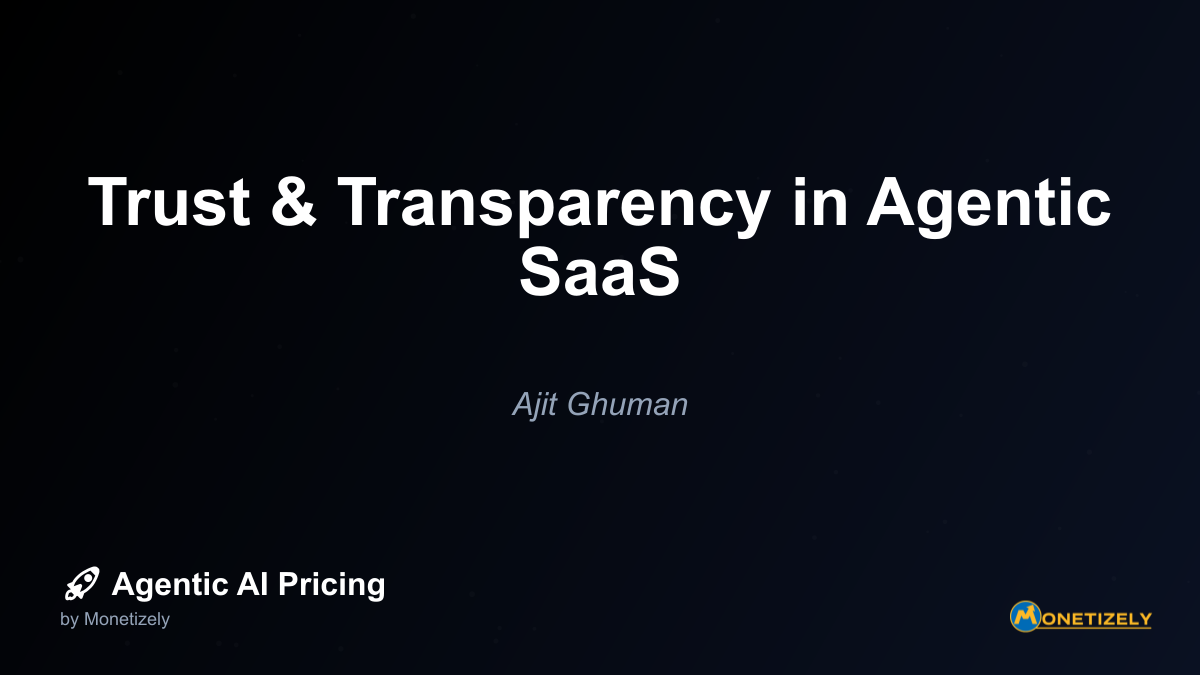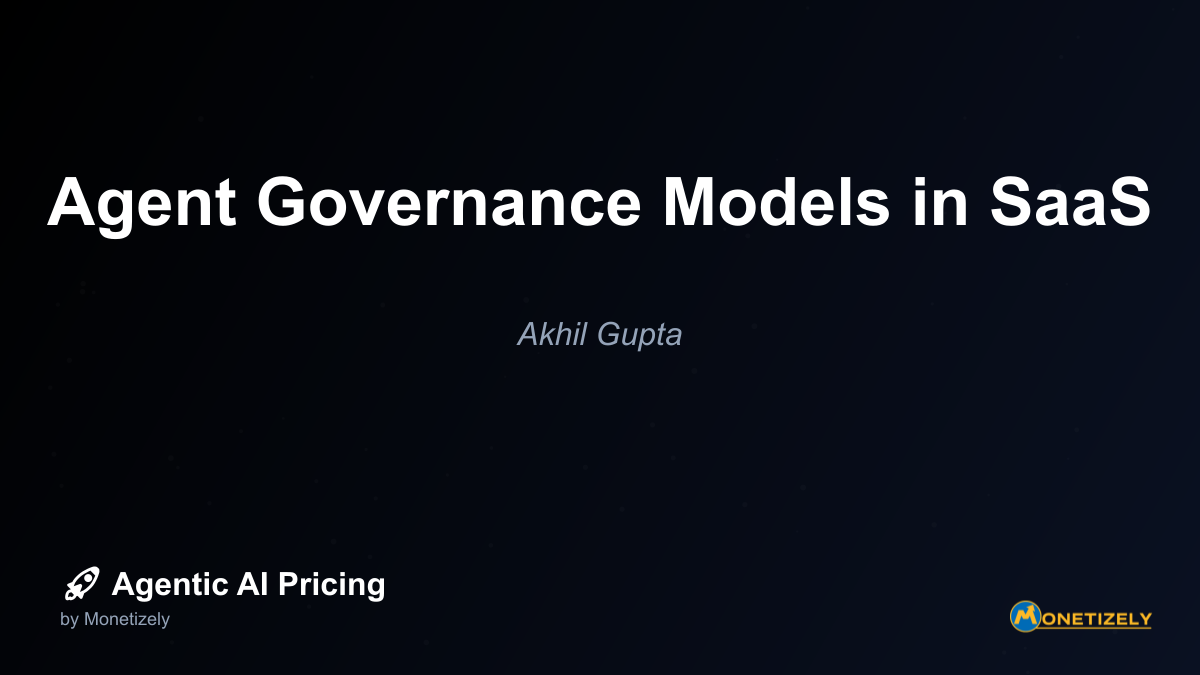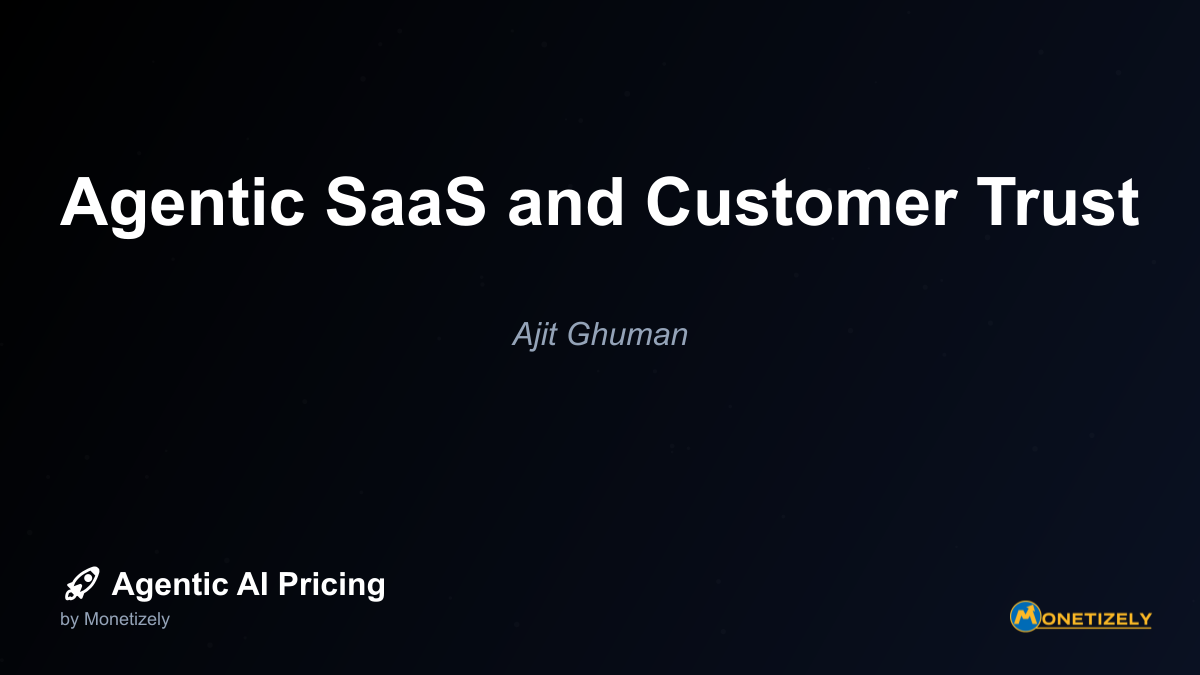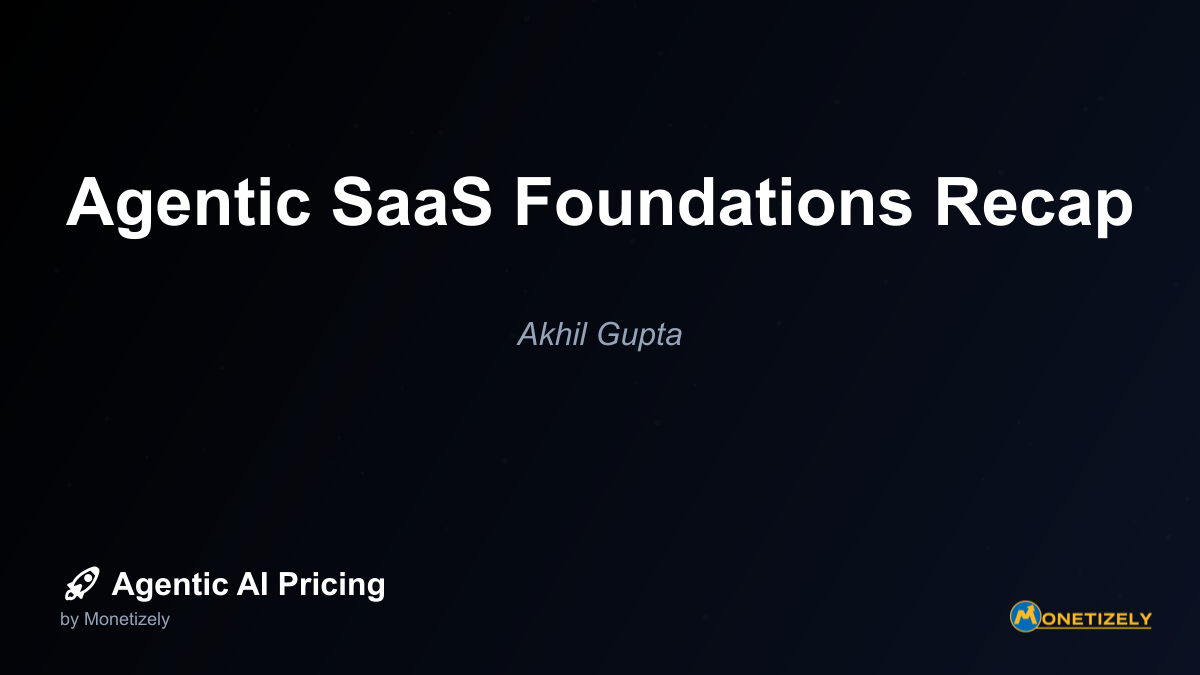· Akhil Gupta · Agentic SaaS Fundamentals · 4 min read
Agentic SaaS Adoption Curve
AI and SaaS Pricing Masterclass
Learn the art of strategic pricing directly from industry experts. Our comprehensive course provides frameworks and methodologies for optimizing your pricing strategy in the evolving AI landscape. Earn a professional certification that can be imported directly to your LinkedIn profile.
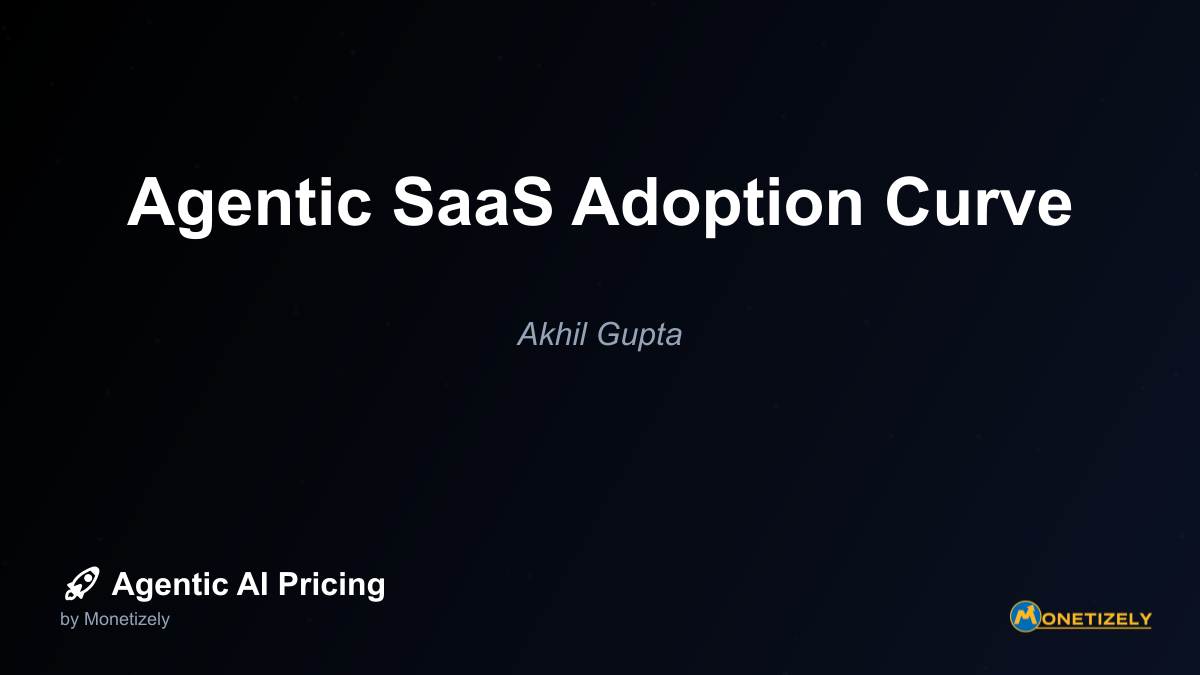
Separating hype from reality requires establishing a realistic timeline for agentic SaaS adoption based on historical technology adoption patterns and current market indicators. The following timeline represents a data-driven projection based on current adoption metrics and historical parallels:
2024-2025: Early Adopter Consolidation
- Market penetration reaches 20-25% among potential enterprise adopters
- Standardized implementation patterns emerge for common use cases
- Initial ROI data becomes available from early implementations
- Vendor consolidation begins as market leaders emerge
- Capability focus remains on narrow, well-defined use cases
2026-2027: Early Majority Transition
- Market penetration approaches 35-40%
- Integration standards mature, reducing implementation complexity
- Pre-built connectors for major enterprise systems become standard
- Risk management frameworks reach maturity
- Capabilities expand to include more autonomous decision-making
2028-2030: Mainstream Adoption
- Market penetration exceeds 50%
- Agentic capabilities become standard components in enterprise software
- Multi-agent systems become commercially viable
- Industry-specific solution patterns reach maturity
- Regulatory frameworks fully incorporate agentic technologies
This timeline suggests that while transformative potential exists, organizations should plan for a measured adoption journey rather than expecting immediate revolutionary impact. The most successful adopters will align implementation timelines with this realistic market evolution rather than pursuing overly aggressive deployment schedules driven by market hype.
Strategic Implications for Different Stakeholder Groups
The current position on the adoption curve carries different strategic implications depending on organizational role and objectives:
For Enterprise Adopters
Capability building phase: Focus on developing internal capabilities and expertise rather than expecting immediate transformative impact.
Selective implementation: Identify specific use cases with clear ROI potential rather than pursuing enterprise-wide deployment.
Experimentation framework: Establish structured approaches to testing and evaluating agentic technologies with defined success metrics.
Vendor selection criteria: Prioritize vendors with proven implementation success over those with the most ambitious capability claims.
For Agentic SaaS Providers
Expectation management: Align marketing claims with actual delivery capabilities to avoid customer disappointment.
Implementation support: Invest in reducing deployment complexity through better tooling and implementation resources.
ROI documentation: Develop robust methodologies for measuring and communicating solution value.
Vertical specialization: Focus on specific industry use cases rather than attempting to serve all potential markets simultaneously.
For Investors
Realistic timeline expectations: Align investment horizons with the measured pace of market adoption.
Implementation efficiency: Prioritize solutions that reduce adoption barriers over those with marginally superior core capabilities.
Infrastructure opportunities: Consider investments in supporting infrastructure alongside direct agentic technology.
Differentiation factors: Evaluate how solutions differentiate in crowded market segments with similar fundamental capabilities.
Measuring Your Organization’s Position on the Adoption Curve
Organizations can assess their current position on the agentic SaaS adoption curve through a structured evaluation framework:
Adoption Maturity Assessment Dimensions
Implementation scope: Range from isolated experiments to enterprise-wide deployment
Decision autonomy: Degree to which agents make decisions without human oversight
Integration depth: Level of connection between agents and core business systems
Organizational readiness: Skills, governance, and change management capabilities
Value realization: Measurable business outcomes from agentic implementations
By evaluating these dimensions, organizations can determine whether they are innovators, early adopters, early majority, or laggards in the agentic SaaS landscape—and adjust strategies accordingly.
Conclusion: Navigating the Gap Between Hype and Reality
The agentic SaaS adoption curve reveals a market in transition—moving from early hype toward practical implementation reality. While we have not yet reached the transformative potential promised by the most enthusiastic advocates, we have progressed beyond mere experimentation to demonstrate meaningful business value in specific use cases.
Organizations navigating this landscape should:
Maintain balanced perspective: Recognize both the transformative potential and current limitations of agentic technologies
Adopt staged implementation: Build capabilities incrementally rather than pursuing revolutionary change
Focus on infrastructure: Invest in the supporting infrastructure necessary for successful agent deployment
Develop evaluation frameworks: Create structured approaches to assessing agent performance and business impact
Build internal expertise: Develop the organizational capabilities needed for effective implementation and management
By understanding the true state of agentic SaaS adoption—beyond both the hype and skepticism—organizations can make strategic decisions that position them for success as the technology continues its evolution toward mainstream adoption. The opportunity is real, but realizing it requires navigating the adoption curve with clear-eyed realism rather than being swept away by market hyperbole or paralyzed by excessive caution.
Co-Founder & COO
Akhil is an Engineering leader with over 16+ years of experience in building, managing and scaling web-scale, high throughput enterprise applications and teams. He has worked with and led technology teams at FabAlley, BuildSupply and Healthians. He is a graduate from Delhi College of Engineering and UC Berkeley certified CTO.
Pricing Strategy Audit
Let our experts analyze your current pricing strategy and identify opportunities for improvement. Our data-driven assessment will help you unlock untapped revenue potential and optimize your AI pricing approach.

